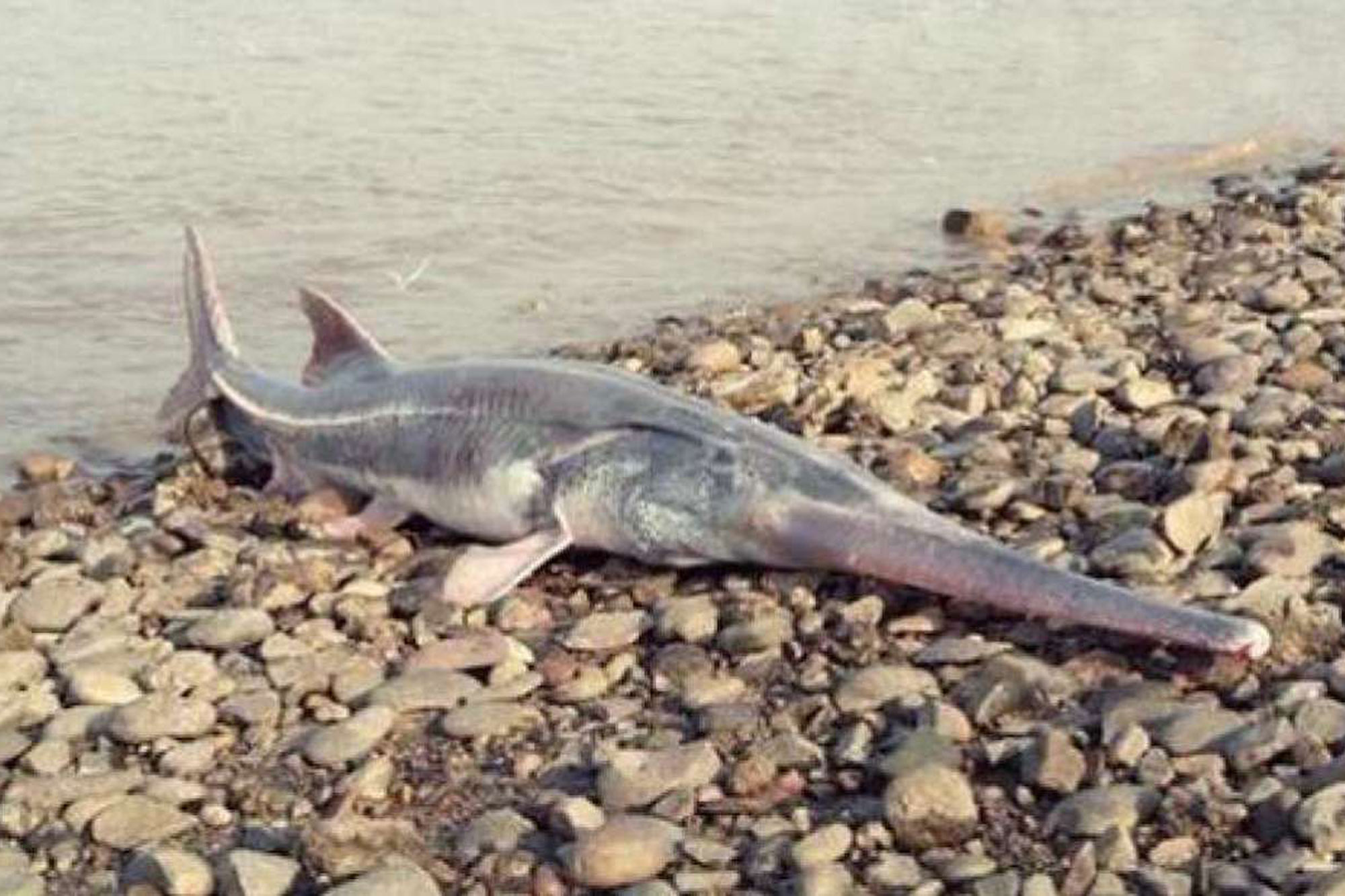So named for its distinctive shape, the Chinese paddlefish, or Chinese swordfish, had a lineage dating back at least 34 million years, scientists believe. It could grow as long as 7 metres (23 feet), but, in the end, could not survive the overfishing, habitat fragmentation and loss of biodiversity in its native Yangtze River according to a research paper in the peer-reviewed journal Science of The Total Environment.
“As no individuals exist in captivity, and no living tissues are conserved for potential resurrection, the fish should be considered extinct,” the paper concluded, pointing to criteria for inclusion on the International Union for Conservation of Nature’s (IUCN) Red List.
The paper was authored by scientists from the Chinese Academy of Fishery Sciences, Dr David Roberts, Reader in Biodiversity Conservation at the Durrell Institute of Conservation and Ecology (DICE), and Dr Ivan Jarić from the University of South Bohemia in the Czech Republic.
The paper describes that, since the late 1970s, Chinese paddlefish populations declined drastically. The decline corresponded with major dam construction in the Yangtze. During that time, the Gezhouba Dam was built on the main stream of the river and the opening of the Three Gorges dam project followed in 2003 — the last year a live Chinese paddlefish was sighted.
A survey in 2017 and 2018 found 332 fish species in the Yangtze but not a single specimen of Chinese paddlefish. The researchers estimate that the fish became extinct some time between 2005 and 2010, its extinction highlighting the importance of enacting measures to protect other endangered Yangtze wildlife, such as the narrow-ridged finless porpoise.
Dr Roberts said, “There are many factors that could have contributed to the Chinese paddlefish becoming extinct, but we know that disruption by dams to their natural habitat alongside wider environmental impact such as pollution will have had damaging effects. As we know, many other fish species are continuing to suffer from these circumstances too. It is a real shame that loss of biodiversity is often only recognised once it is too late for some species and we hope that cases like this can raise the awareness to protect endangered species in the future.”
Coverage on the paper co-authored by Dr Roberts includes National Geographic, CNN, The Times (paywall), The Independent and Mongabay.
Extinction of one of the world’s largest freshwater fishes: Lessons for conserving the endangered Yangtze fauna by Hui Zhang, Ivan Jarić, David L. Roberts, Yongfeng He, Hao Du, Jinming Wu, Chengyou Wang and Qiwei Wei has been published in Science of The Total Environment.

